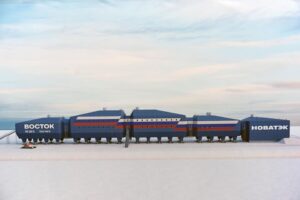 Reconstruction of the Vostok II Station, the only inland Antarctic station used by Russia, is scheduled to be completed by 2024.
Reconstruction of the Vostok II Station, the only inland Antarctic station used by Russia, is scheduled to be completed by 2024.
“At present, work is being completed on the design of residential modules with working rooms for laboratories, engineering modules and a garage, which will be manufactured and delivered to St. Petersburg at the expense of private funds. In the future, at the expense of federal funds, the modules will be delivered to the Progress station, and from there, across the territory of Antarctica to the destination for assembly. The last section of the route will be about 1500 kilometers and will be covered by a sledge-caterpillar train. This is the only way to reach the station by land – nine months a year it is cut off from the rest of the world ” commented Sergei Khrushchev, Director of the Department of State Policy and Regulation in Hydrometeorology, Arctic, Antarctic and World Ocean Studies of the Russian Ministry of Natural Resources .
Recall that the first experimental flight to the station took place in 2019. As a result, the specialists completed the revision of the sled, which will deliver the component parts of modules weighing up to 60 tons.
The delivery of fuel to Progress and the compaction of the site for the placement of facilities at the Vostok station is in full swing. After its reconstruction on an area of 2500 square meters. will accommodate residential modules, laboratories, a medical unit, a power plant, garages for equipment. In the Antarctic summer, 35 people will work at the station, 15 will remain for the winter.
The 65th seasonal expedition is currently underway. It involves 110 winterers who spend about a year in Antarctica and 120 seasonal employees. The scientific expedition vessels “Akademik Treshnikov” and “Akademik Fedorov”, as well as the research vessel “Akademik Alexander Karpinsky” are involved in the work.
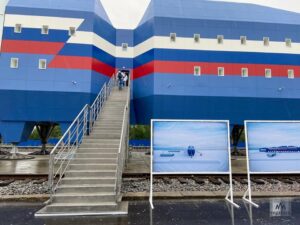 Photo are coming from the official website of the Russian Antarctic Expedition
Photo are coming from the official website of the Russian Antarctic Expedition
In addition, it is reported that, last Jan. the snow surface at the site was being compacted to accommodate the future facilities & fuel loads were being delivered in advance at the coastal Base Progress II (WAP RUS-11). With a post on FB, Alexey Loginov informs that new building of Vostok II station is ready for transportation to Antarctica!
The project of the new station was performed by a German company, while bilders are from Novatec company (specialized on LNG at Arctica), and all constructions will reach Antarctica this season. All material load on Polar ships will land at Progress II Base (WAP RUS-11), then will be transported on site by huge sledge with over 1000 km traverse
A training of аssembly will be performed in St. Petersburg, then the building will be disassembled, loaded on ship, heading the Antarctic coast, pre-assembled blocks will move on a huge sled.
The Polar Ship Sevmorput, the world’s only nuclear-powered cargo ship, is currently preparing for a voyage to Antarctica to supply the new Russia’s Vostok II Research station.
When ready, the Antarctic hunters will be looking forward a Radio contact on HF as for sure, the New Vostok Station (Vostok II) will be a brand NEW WAP WADA reference.

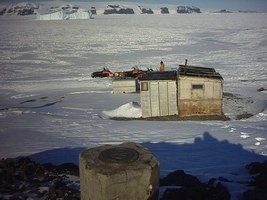 The Refuge, is one of the 18 shelters that are under the responsibility of Esperanza, which is responsible for the maintenance and the care. It has capacity for 12 people, food for two months, fuel, gas and first aid kit. It has been used in some Argentine scientific campaigns and ordinary patrolling. The main scientific observations are the geology and topography of the area, the sea ice and survey on the Crabeater seal and the Weddel seal.
The Refuge, is one of the 18 shelters that are under the responsibility of Esperanza, which is responsible for the maintenance and the care. It has capacity for 12 people, food for two months, fuel, gas and first aid kit. It has been used in some Argentine scientific campaigns and ordinary patrolling. The main scientific observations are the geology and topography of the area, the sea ice and survey on the Crabeater seal and the Weddel seal.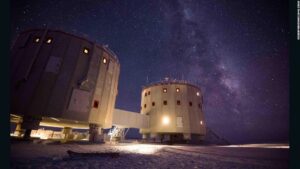 After four months of darkness, the sun finally rises on 11 August at Concordia Research Station (
After four months of darkness, the sun finally rises on 11 August at Concordia Research Station (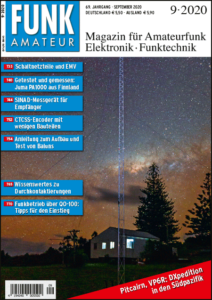 From page 789 and ahead, the newest Edition of the Funkamateur includes four Antarctic-related articles
From page 789 and ahead, the newest Edition of the Funkamateur includes four Antarctic-related articles Penguin populations are usually associated with the polar ice caps, most likely originating from Antarctica. A team of scientists from Berkley University of California has determined that penguins first lived in Australia and New Zealand nearly 22 million years ago.
Penguin populations are usually associated with the polar ice caps, most likely originating from Antarctica. A team of scientists from Berkley University of California has determined that penguins first lived in Australia and New Zealand nearly 22 million years ago. Blood and tissue samples allowed scientists to trace back how penguins became diverse throughout millions of years, and how they moved south to Antarctica. They believe that the emperor and king penguins left their ancestors and migrated to Antarctica due to the abundant supply of food available. These two specific penguin species have caused experts to debate about where they fit in the penguin family tree and are believed to belong to a ‘sister group
Blood and tissue samples allowed scientists to trace back how penguins became diverse throughout millions of years, and how they moved south to Antarctica. They believe that the emperor and king penguins left their ancestors and migrated to Antarctica due to the abundant supply of food available. These two specific penguin species have caused experts to debate about where they fit in the penguin family tree and are believed to belong to a ‘sister group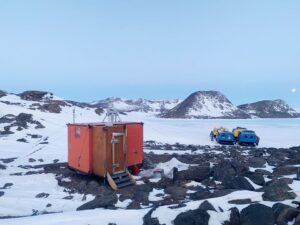 Mawson Base (WAP AUS-Ø4) and 5 km north-east of Taylor Glacier on an island in the Colbeck Archipelago. Established in 1988, it is used as shelter for visitors to the Taylor Glacier area, including to monitor the Taylor Glacier emperor penguin colony in ASPA 101. It can only be accessed over fast ice or via rotary wing aircraft. The refuge can accommodate four persons. It contains medical facilities such as comprehensive first aid kit, food and fuel for heating, lighting, and cooking (either kerosene or LPG)
Mawson Base (WAP AUS-Ø4) and 5 km north-east of Taylor Glacier on an island in the Colbeck Archipelago. Established in 1988, it is used as shelter for visitors to the Taylor Glacier area, including to monitor the Taylor Glacier emperor penguin colony in ASPA 101. It can only be accessed over fast ice or via rotary wing aircraft. The refuge can accommodate four persons. It contains medical facilities such as comprehensive first aid kit, food and fuel for heating, lighting, and cooking (either kerosene or LPG)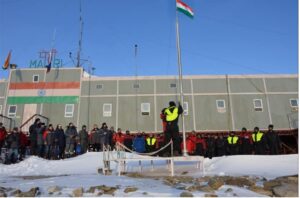 The 74th India Independence Day celebrations has been a great moment at Maitri Indian Research Base in Antarctica (WAP IND-Ø3).
The 74th India Independence Day celebrations has been a great moment at Maitri Indian Research Base in Antarctica (WAP IND-Ø3).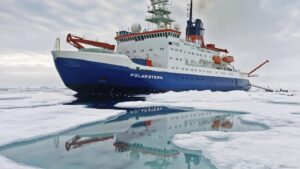 DPØPOL/mm is going to be active shortly. So far, the call sign has only been used on FT8 and PACTOR, so there is some real radio operation now!
DPØPOL/mm is going to be active shortly. So far, the call sign has only been used on FT8 and PACTOR, so there is some real radio operation now! Going back to Felix report, the Ham Radio Station is up and running, so Andreas, DL3LRM, will be active in CW signing DP0POL/MM on 40m, 30m, and 20m from various locations near the North Pole. QSL via DL5EBE
Going back to Felix report, the Ham Radio Station is up and running, so Andreas, DL3LRM, will be active in CW signing DP0POL/MM on 40m, 30m, and 20m from various locations near the North Pole. QSL via DL5EBE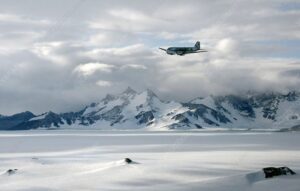
 Satellite observations have found a raft of new Emperor penguin breeding sites in the Antarctic. The locations were identified from the way the birds’ poo, or guano, had stained large patches of sea-ice.
Satellite observations have found a raft of new Emperor penguin breeding sites in the Antarctic. The locations were identified from the way the birds’ poo, or guano, had stained large patches of sea-ice.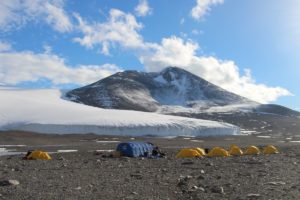 Field camp at Spaulding Pond, is located at 77° 39’ South, 163° 7’ East is a pond 0.3 nautical miles (0.6 km) northeast of the terminal ice cliff of Howard Glacier in Taylor Valley, Victoria Land, Antarctica.
Field camp at Spaulding Pond, is located at 77° 39’ South, 163° 7’ East is a pond 0.3 nautical miles (0.6 km) northeast of the terminal ice cliff of Howard Glacier in Taylor Valley, Victoria Land, Antarctica.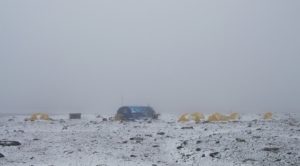 Spaulding Pond Field Camp, 77° 39’ South, 163° 7’ East, will be add to the
Spaulding Pond Field Camp, 77° 39’ South, 163° 7’ East, will be add to the 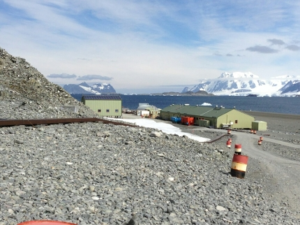 Dirck Gerritsz Laboratory (
Dirck Gerritsz Laboratory (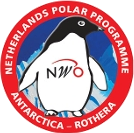 The Netherlands is a signatory to the Antarctic Treaty and has observer status on the Arctic Council. As a participant, the country undertakes to invest in research at the poles. This is the reason behind the Netherlands’ Polar Research Program.
The Netherlands is a signatory to the Antarctic Treaty and has observer status on the Arctic Council. As a participant, the country undertakes to invest in research at the poles. This is the reason behind the Netherlands’ Polar Research Program.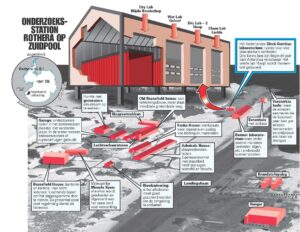 NWO and the Royal Netherlands Institute for Sea Research (NIOZ) developed a design for a laboratory in conjunction with BAS. An arrangement with four separate laboratories made from sea containers placed in a ‘docking station’ was chosen. It supplies the labs with electricity, Internet and water and protects them from the severe weather conditions. BAS built the docking station and NIOZ built the mobile laboratories, each with funding from the Netherlands Polar Program (NPP). Main science disciplines studied at Dirck Gerritsz Laboratory are:
NWO and the Royal Netherlands Institute for Sea Research (NIOZ) developed a design for a laboratory in conjunction with BAS. An arrangement with four separate laboratories made from sea containers placed in a ‘docking station’ was chosen. It supplies the labs with electricity, Internet and water and protects them from the severe weather conditions. BAS built the docking station and NIOZ built the mobile laboratories, each with funding from the Netherlands Polar Program (NPP). Main science disciplines studied at Dirck Gerritsz Laboratory are: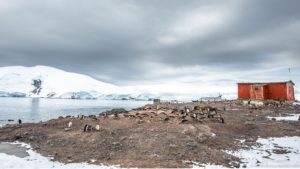 Refuge Caillet-Bois (WAP ARG-NEW) is an Argentine refuge in Antarctica located on D’Hainaut Island (63º54´00″ South , 60º47´00″ West). The refuge was inaugurated by the Argentine Navy on December 10th 1954. Originally it took the name of Refuge Port Mikkelsen referred to the name of the Danish arctic explorer Ejnar Mikkelsen. The refuge with its current name, which pays tribute to the Argentine naval Captain and historian Teodoro Caillet Bois,
Refuge Caillet-Bois (WAP ARG-NEW) is an Argentine refuge in Antarctica located on D’Hainaut Island (63º54´00″ South , 60º47´00″ West). The refuge was inaugurated by the Argentine Navy on December 10th 1954. Originally it took the name of Refuge Port Mikkelsen referred to the name of the Danish arctic explorer Ejnar Mikkelsen. The refuge with its current name, which pays tribute to the Argentine naval Captain and historian Teodoro Caillet Bois,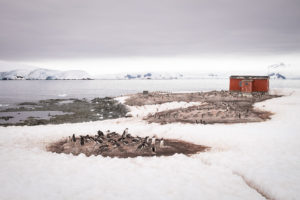 was given in December 1977 by the icebreaker ARA General San Martin (Q-4). Then it was closed and evacuated on January 17 of the following year by the icebreaker personnel.
was given in December 1977 by the icebreaker ARA General San Martin (Q-4). Then it was closed and evacuated on January 17 of the following year by the icebreaker personnel.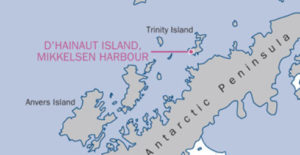 D’Hainaut Island is a small island largely flat, rocky island (less than 1 sq km), lying in Mikkelsen Harbour, a 3km wide bay, lined with ice cliffs, indenting the south side of Trinity Island between Skottsberg and Borge Point. The island is often snow covered until late in the season and there are a number of shallow reefs in the waters surrounding the island.
D’Hainaut Island is a small island largely flat, rocky island (less than 1 sq km), lying in Mikkelsen Harbour, a 3km wide bay, lined with ice cliffs, indenting the south side of Trinity Island between Skottsberg and Borge Point. The island is often snow covered until late in the season and there are a number of shallow reefs in the waters surrounding the island.